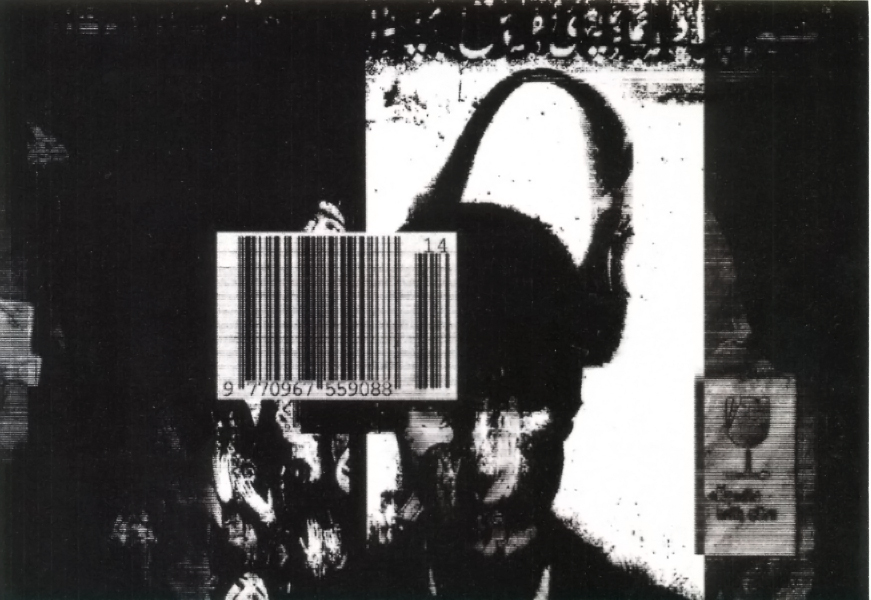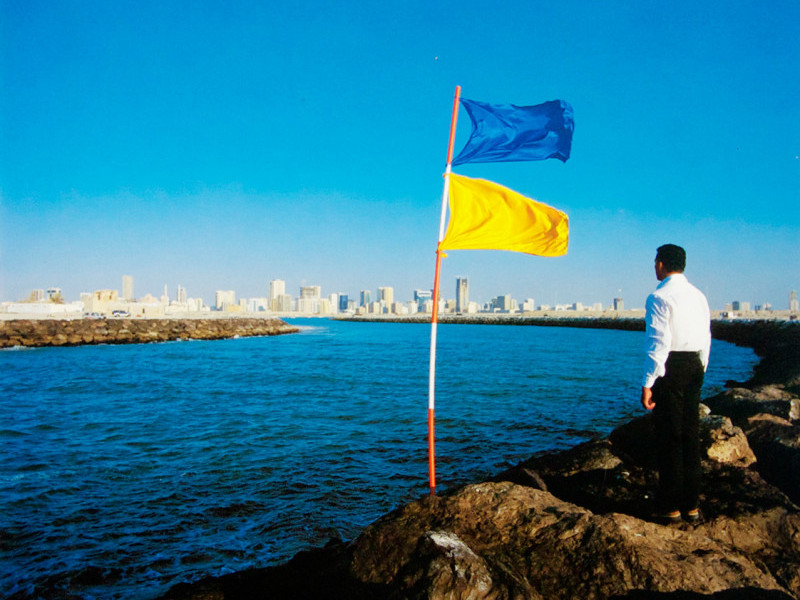
Rituals of silence, 2001
Anas Al Shaikh
Rituals of silence, 2001
Silk Print
search


Anas Al Shaikh
Rituals of silence, 2001
Silk Print
"Maybe it is harder than we might imagine, however, we've got to start. The prospects of failure may be greater than those of success. It doesn't matter. What matters is to move out of inertia".
Anas AI-Shaikh
In his garage at Qudeibia, Anas AI Shaikh established a delicate space with a child's memory which has supported him by demanding that he visualises a humane attitude to life.
We may have another interpretation, clinging to the images in the child's head. But he keeps celebrating this vision scratched in a way that shows how hard the collision is between those heavenly visions and hard reality.
He doesn't care for romanticising childhood's 'gift'. Most of his works express a tougher interjection of memory on childhood, as we observe in a picture showing a group of children including Anas and his sister. That picture is penetrated by another one crowded by military equipment deployed in preparation for Gulf war. The multitude is literally the abyss and punctum, the point of fixation, as evidence of the violent hegemony that destroys the mechanism of childhood and the fix of imagination.
"To all those who reside in the street, passing through the streets, forgotten on all the streets of homeland. To all those to whom the only thing linking me is the love of the soil of homeland, I present some of my objects in this street, hoping they may motivate your attention."
More importantly, he chose a place near passers by, close to their shoes who pass along the streets and alleys.
"The garage itself is such a place since it is the only corner of the house we don't live in, but use as safe refuge for the car, our only machine of passage. So too is childhood memory, a place we no more live in, but use as safe refuge for our own history, our only salvation and ammunition in this fierce world."
This dilemma has been referred to by Anas, "Let them reject us, what is the point in that? The worst thing in life is silence, the state of no rejection/no acceptance/no attitude. We, the people and architects of formative life have to test all places and spaces in this homeland. We want to confront those ideologies and their authorities. We seek to provoke questions and awareness. They may reject us, let them, so what? We don't care, we must court rejection and marginalization, particularly in a consumer society where the sabotage of the imagination is perpetrated by consent. What portrays the artist is what portrays the people. What do we want to see, to transform into a testimony? What force dictates the record of the violent events of Gulf War, 9/11, and the 'intifada', in the stream of violent spectacles? Is not the artist becoming the memory displaced in the many living voices of dissent? We want our visual sense to express our attitude against all what is destructive to the eye, thought and soul. We want our vision to become a luminous memory of man and homeland."
The New Deities, Installation 2002.
The theme of the work relates to hegemony and power, and the referring of societies as well as their values and cultures to those of the more powerful in a way that enables the powerful to their authority, desires and systems that are different from those of other peoples, and also their attempts to dominate the wealth of various peoples without taking into consideration the interests of those societies, their values and doctrines, which lead to conflict between both of them.
While weak and less developed nations try to oppose attempts of hegemony, we observe that the more powerful are trying to make deities of themselves to control the freedom, capabilities and will of societies and life in a way that they can order, prohibit, reject and accept according to their own interests and far from any humanistic or moral aspects. Therefore, a state of argument and conflict is forming between values and sublime norms and the reality imposed upon the weak and backward.
This relationship of convergence and divergence between the weak and the powerful IS influenced by many elements such as the mutual political and economic interests as well as a QF8UB of issues, relations and domination, cultural, social and ideological systems, and the simple agreements that bind both sides.
Materials used in the work: Big transparencies, digital photography, ready made objects, audio - video multimedia (video), natural objects (apple), sticking words and scents ('oud' and incense)
PL

Sharjah Biennial 6